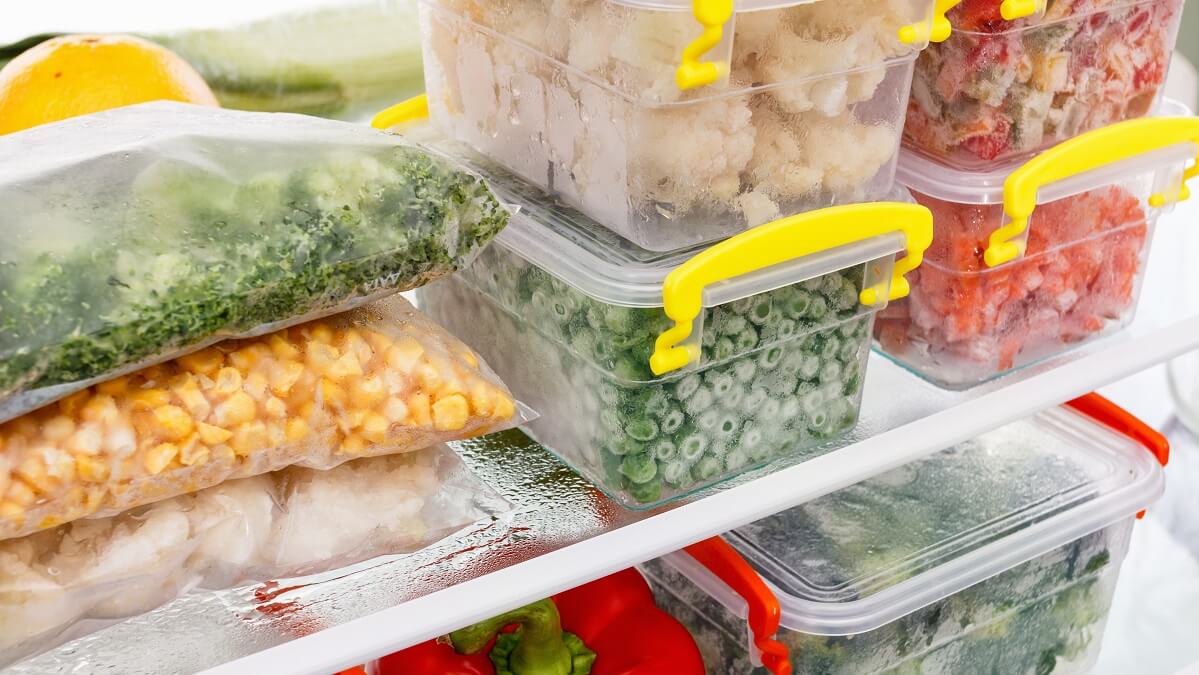Buying frozen food or freezing meals in advance is a great way to save money and reduce food waste, especially in small households.
However, when it comes to preparing and freezing meals, many people make these common, unhygienic mistakes. For your own health and safety, avoid these frozen food fails.
Thawing food on the kitchen bench
As soon as frozen food warms to 4°C or more, it will begin to thaw. If bacteria were present before the food was frozen it may begin to multiply, so it’s important to thaw food safely.
Never leave food to thaw on the counter or in hot water. Even if the centre of the food is still frozen, the outside of it may enter the danger zone, between 4°C and 60°C.
Instead, thaw frozen food in the refrigerator, where it can be kept at a stable, cool temperature. Alternatively, you can thaw tightly packaged foods in cold water. This method is faster than refrigerator thawing, though you’ll have to change the water every half hour. If you plan to thaw your food in the microwave, cook it immediately after to prevent bacterial growth.
Not keeping work areas clean
While many people choose to eat frozen food for the ease and relative lack of cleaning, your kitchen space must be kept hygienic both before and after preparing your meal. This involves cleaning down your microwave after every use and washing your hands thoroughly before and after handling food.
Not following instructions
Don’t assume that all frozen meals are precooked. Labels on food can be confusing, and many meals can look as if they have been cooked. If labels state ‘ready to cook’, ‘oven ready’ or ‘cook and serve’, it means that they have not yet been cooked and need appropriate cooking in order to prevent illness. Follow instructions.
Not boiling frozen berries
There have been a few health scares surrounding frozen berries, and because of their high contact with work surfaces, and the different qualities of water in which they are washed, frozen berries can be carriers of viruses and bacteria. Few people know that experts recommend boiling frozen berries for a minute or two before using them, as cold temperatures do not kill bacteria.
Allowing freezer burn
If you’ve ever pulled food from the freezer to see that it has become dry or looks to be a brown or grey colour, this is freezer burn. It’s caused when air interacts with frozen foods. You can still eat the food, though you may notice it tastes a little different. To avoid this, make sure you properly seal all your freezer bags. If you vacuum seal food bags for storage, make sure you’re doing the same with your frozen foods.
Soggy vegetables
When you freeze and thaw vegetables, the water within the cells expands and contracts, leaving them mushier than when they were fresh. However, cooking them in an air fryer or a convection oven will leave moisture on the inside while crisping them on the outside.
Because thawed vegetables are softer than fresh vegetables, WebMD recommends halving the time that you cook them for to avoid overcooking.
Not blanching your vegetables
When you’re preparing your own vegetables to freeze, it’s important to blanch them first. Steam or boil your vegetables for two minutes then leave them in an ice bath to cool. That will inactivate enzymes that would otherwise affect the nutritional value, colour and flavour of your vegetables.
Were there any surprises in that list for you? Do you have any other suggestions? Share them in the comments section below.
Also read: Nine foods you shouldn’t freeze

